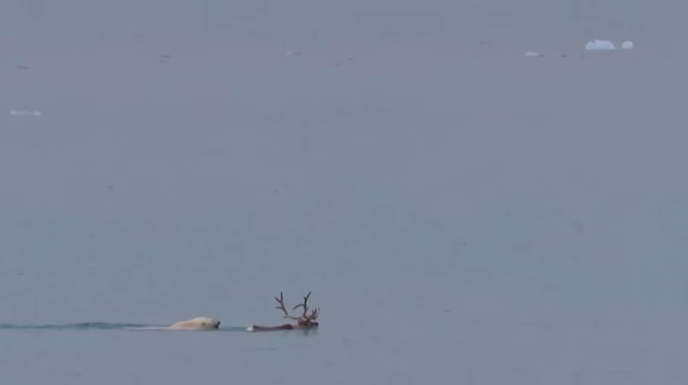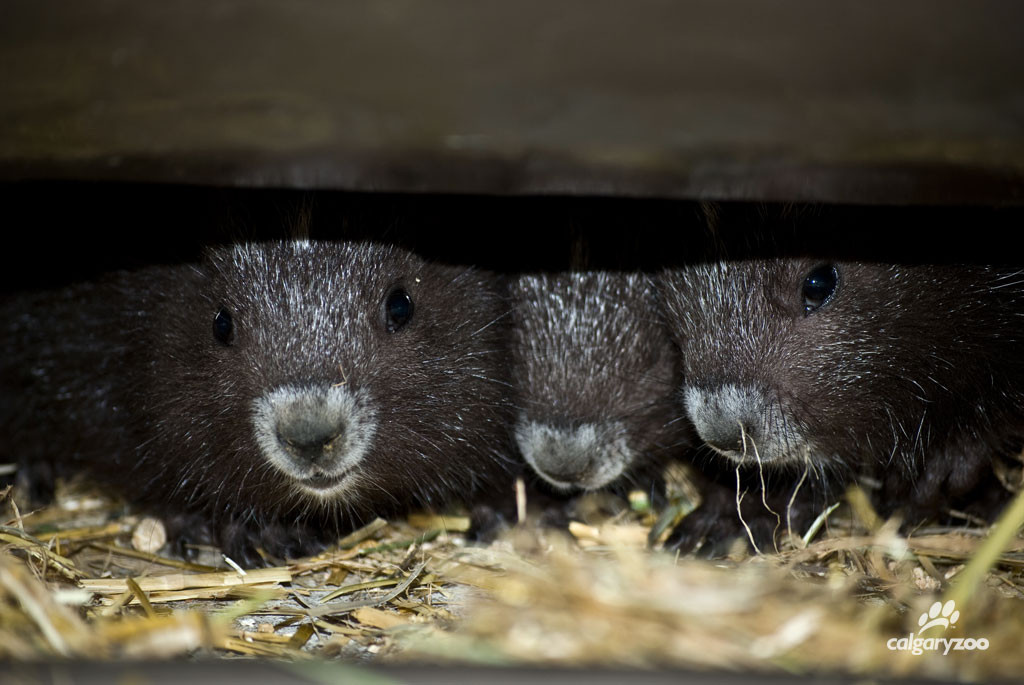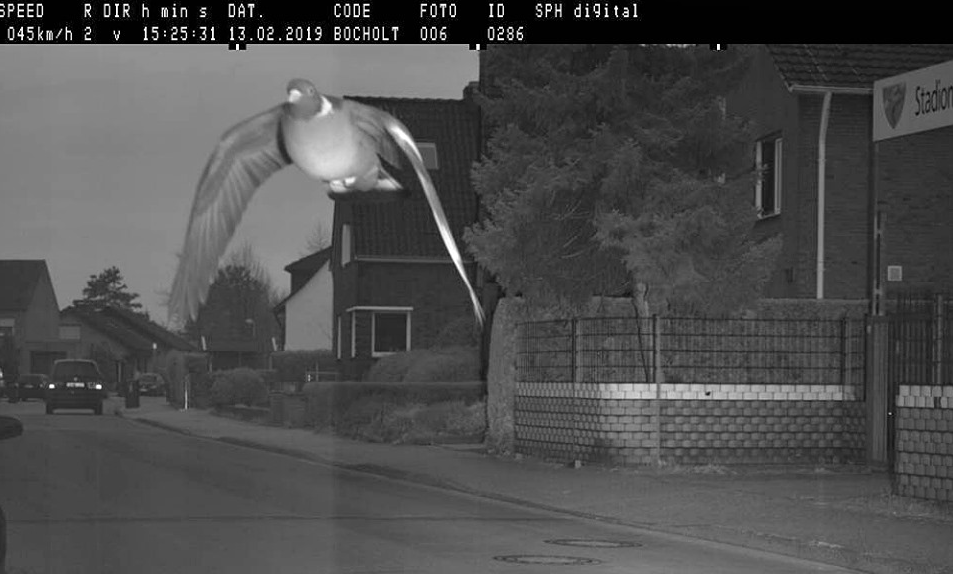Polar bears are known to prey on seals, but researchers have captured footage of one swimming after — and ultimately drowning — a reindeer in the Svalbard archipelago in northern Norway.
While the sighting is exciting, it’s also a warning sign, according to scientists, of climate change as the predator species looks for new foods inland to eat.
“The polar bear Ursus maritimus is one of the species most endangered by the rapidly declining sea–ice cover in the Arctic, which they use as a platform to hunt fatty, high-energy seals,” the authors write in Polar Journal. “In recent decades, more polar bears have been forced to remain longer on land, so their access to seals is limited.”
The sighting of the adult female bear in action took place on Aug. 21, 2020 about 200 metres from the Polish Polar Station in Hornsund, but was only published recently by Polish and Norwegian researchers Lech Stempniewicz, Izabela Kulaszewicz and Jon Aars.
Mateusz Gruszka captured the incredible encounter between the bear and the caribou on video.
Warning: If you watch the video, you will see a polar bear hunt, kill and eat a reindeer.
The report goes on to describe the hunt in dramatic detail, and with aid of a diagram.
According to the researchers, the young adult female bear was in good shape when she ignored some “noisy people” not far away and began sniffing the air for her prey. Five to seven caribou were nearby, but the bear had its sights on two before disappearing from view.
“A few seconds later, it sprang out of the hollow and galloped towards the nearest reindeer, an adult male in good physical condition, which was facing away from the bear and only now noticed the attacker (point 2),” the report notes. “It got up – this took a moment – and ran directly to the seashore about 30 m away. The bear dashed into the water behind the fleeing prey.”

The reindeer was swimming fast, but the bear quickly caught up.

What happened next is stunning.
“On reaching its prey, about 25 m offshore, the bear first grasped the reindeer’s rump, then sank its claws into it, bringing its prey to a halt. It then climbed onto the reindeer, using its weight to submerge the prey, so that only the latter’s head and neck were still visible above the water. Then with its teeth it grabbed the reindeer by the nape and immersed it completely. Prey and attacker struggled for a while, parts of each animal appearing alternately on the surface,” the authors continue.

“Then, the bear gripped the reindeer’s neck from below and dispatched it within about a minute. The bear then turned the reindeer over, submerging it repeatedly for about 15 min, even though it was already dead,” the authors explain.

The bear dragged its dinner ashore and feasted for about two hours eating the majority of the animal while shooing away Arctic foxes and gulls. Then, it covered the carcass with stones to deter scavengers.
Then, like most of us after a big meal, the bear wandered away and slept for 12 hours. While some foxes and gulls did pick away at the leftovers, the next day the bear returned to gobble up some more of its kill.
Incredibly, the field team spotted the same bear on Aug. 23 dining on another freshly killed reindeer. Though, seemingly less hungry, it didn’t eat for as long as or as much, and the bear couldn’t be bothered to fend of scavenger foxes or gulls.

For the next two days, the bear was observed relaxing, then vanishing without being spotted in the area again. The foxes and gulls devoured what was left of the reindeer for another 10 days.
“Pre-2000 sources state that polar bears do not attack Svalbard reindeer,” the authors write. “This report is the first description and documentation of the complete course of a polar bear hunt for adult reindeer in Hornsund, SW Spitsbergen, and also of the bear’s hunting behaviour and the reindeer’s response.”
The caribou don’t yet seem to be alert to this new predator and ready for bear attacks.
There are some 300 polar bears in this region, according to scientists, but even if polar bears begin routinely feasting on caribou, there’s no fear those numbers will run out as they are expected to continue to increase as the tundra climate warms.
However, seal blubber provides a better energy source for polar bears to manage life in an Arctic climate.
“Land-based food sources cannot provide bears with sufficient energy, and bears in the southern Beaufort Sea and western Hudson Bay lose weight when on land,” note the authors.
It leaves researchers to wonder what the future holds for the iconic species, already listed as vulnerable by the Wold Conservation Union, as it adjusts to the impact of climate change.




